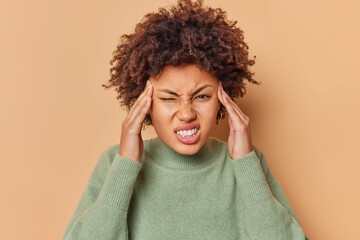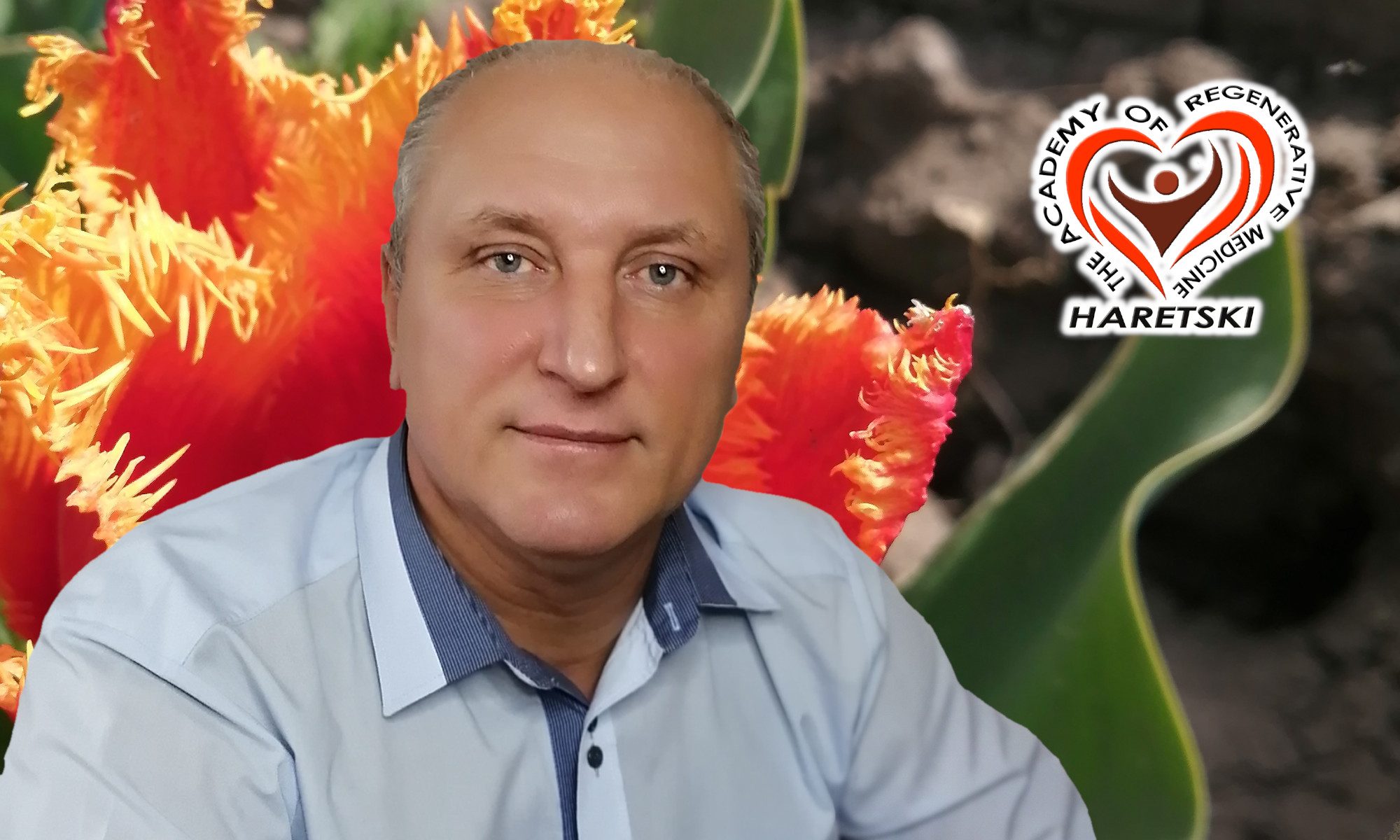What is a common headache?
Headache is pain or discomfort in the head, in the scalp, or in the neck area. Common types of headaches include tension headaches, migraines or cluster headaches, sinus headaches, and headaches starting in the neck. You may also have a mild headache with colds, flu or other viral diseases, as well as with a low temperature.

Almost every one of us has had and manifested a headache in one way or another, and most of us have had it many times. A slight headache is nothing more than an unpleasant feeling of discomfort associated with light heaviness, which can be relieved with over—the-counter painkillers, food or coffee, or a short rest. But if you have a severe or unusual headache, you can look at more information or consult a doctor about: stroke, tumor or blood clot. Fortunately, such problems are rare.
What causes headaches?
What causes pain in the head?
A headache can sometimes be felt by us as a pain somewhere inside the brain, but this is not the case. Most headaches begin with the nerves of the muscles and blood vessels surrounding the head, neck and face. These painful nerves can be activated by stress, muscle tension, dilation of blood vessels and other factors.
Doctors don't fully understand what exactly causes most headaches. However, they know for sure that the brain tissue and the skull have nothing to do with it, since they do not have nerves that could register pain. However, pain can be signaled by the blood vessels of the head and neck, as well as the tissues surrounding the brain, and some important nerves originating in the brain. The scalp, sinuses, teeth, muscles and joints of the neck can also cause headaches.
Is a headache a nervous pain after all?
Headaches occur when pain-sensitive nerve endings called nociceptors respond to headache triggers (such as stress, certain foods or smells, medication) and send messages through the trigeminal nerve to the thalamus, the brain's "relay station" for feeling pain from throughout the body.
What causes headaches every day?
The causes of many chronic daily headaches are still not fully understood. True (primary) chronic daily headaches do not have a definite underlying cause. Conditions that can cause non-primary chronic daily headaches include: inflammation or other problems with blood vessels in and around the brain, including stroke.
When should I start worrying about headaches?
You can manage many types of headaches on your own, and your doctor can prescribe medications that will help you control most of the more severe headaches. You can also complete a general wellness, rejuvenation and body recovery program at the Regeneration Academy. This is necessary so that your body can heal itself from diseases that cause headaches. But some headaches require immediate medical attention. Here are some warning signs when you should be worried about headaches:
- headaches that first develop after the age of 50.
- a serious change in the nature of your headaches
- is an unusually severe
- headache headache that worsens with coughing or movement
- headaches that are constantly aggravated
- by changes in personality or mental functions
- headaches that are accompanied by fever, stiffness of the occipital muscles, confusion, decreased attention or memory, or neurological symptoms such as visual impairment, slurred speech, weakness, numbness or cramps.
- headaches accompanied by painful redness of the eyes
- headaches accompanied by pain and soreness near the temples
- headaches after a blow to the head
- headaches that interfere with normal daily activities
- headaches that occur suddenly, especially if they woke you
- up headaches in patients with cancer or disorders of the immune system.
Types of headaches
There are more than 300 types of headaches, but only about 10% of headaches have a known cause. The rest are called primary headaches. Here is a summary of some of the main primary headaches.
Tension headaches
Headaches, which occur due to tension, occur in about three out of four adults, are the most common of all headaches. In most cases, they are mild or moderate in severity and occur infrequently. But some people have severe tension headaches, and some are bothered by them three or four times a week.
A typical tension headache causes a dull, constricting pain on both sides of the head. People with severe tension headaches may feel like their head is being squeezed in a vice. Your shoulders and neck may also hurt. Some tension headaches are caused by fatigue, emotional stress, or problems affecting the muscles or joints of the neck or jaw. Most of them last from 20 minutes to two hours.
If you have tension headaches from time to time, you can take care of them yourself. Over-the-counter painkillers often help with the effects of pain, but they cure you of the causes of the disease. A hot water bottle or a warm shower can also help; some people feel better after a short nap or a light snack.
If you have frequent tension headaches, try to identify triggers to avoid them. Do not overwork and do not skip meals. Learn relaxation techniques; relaxation is especially beneficial because it can relax both your mind and neck muscles. If you clench your jaw or grind your teeth at night, a bite plate can help.

Migraine
Migraines occur less frequently than tension headaches, but they are usually much more severe. They are two to three times more common in women than in men, but this is a small consolation if you belong to the minority of men who suffer from migraines. And since a Harvard study involving 20,084 men aged 40 to 84 years showed that migraines increase the risk of heart attacks by 42%, men who suffer from migraines should take headaches seriously.
Neurologists believe that migraines are caused by changes in cerebral circulation and nerve cell activity. Genetics plays a role because 70% of migraine victims have at least one close relative with this problem.
Causes of migraines
Although migraines can occur without warning, they are often triggered by a trigger. The causes that cause migraines vary from person to person, but a migraine sufferer usually remains sensitive to the same triggers. The table shows some of the most common ones.
The main triggers of migraines
- Weather changes: increased humidity, heat.
- Lack of sleep or oversleeping.
- Fatigue.
- Emotional stress.
- Sensory triggers of migraines
- Bright or flickering light,
- loud noises,
- pungent odors.
Dietary triggers of migraines
- skipping meals
- alcohol, especially red wine
- chocolate
- nitrates in sausages and fish
- aged cheese
- increase or decrease in the amount of caffeine
- monosodium glutamate (often present in Asian and finished products).
Migraine symptoms
About 20% of migraines start with one or more neurological symptoms called aura. Visual complaints are the most common. They can include halos, sparkles or flashing lights, wavy lines, and even temporary loss of vision. The aura can also cause numbness or tingling on one side of the body, especially on the face or arm. Some patients develop aura symptoms without headaches; they often think they have a stroke, not a migraine.
Most migraines develop without an aura. In typical cases, the pain is localized on one side of the head, often begins around the eye and temple, and then spreads to the back of the head. The pain is often severe and is described as throbbing or throbbing. Nausea is a common occurrence, and many migraine patients experience watery eyes, runny nose, or nasal congestion. If these symptoms are pronounced, they can lead to an erroneous diagnosis of headaches in the sinuses. One way to remember the features of migraines is to remember the 5 main signs.
1 – throbbing pain;
2 – severe seizures lasting one day;
3 – unilateral (one-sided) pain;
4 – nausea and vomiting;
5 - is the intensity that leads to disability.
Without effective treatment, migraine attacks usually last from four to 24 hours. When you suffer from migraines, even four hours is too long, and that's why early treatment of migraines is so important.
Treatment and prevention of migraines
Migraine treatment. If you notice a migraine in its earliest stages, you will be able to control it with over-the-counter painkillers. But we strongly recommend that you undergo prevention and rehabilitation in the ARM according to a general or individual program, since the true causes of migraines are very difficult to determine.
Prevention of migraines. Some people can prevent migraines by simply avoiding provoking factors. Others succeed in treating accidental seizures in a timely manner. But preventive folk medicines and ARM procedures often help patients who suffer from frequent migraine attacks. In difficult cases, contacting a headache specialist from the Regeneration Academy may help.
Types of headache by localization
One side of the head. Common cause: migraine.
The area around the head or the entire head. Common cause: tension headache.
One side of the head, inside and around the eye. Common cause: cluster headache.
The front of the head and face. Common cause: headache in the sinuses.
Cluster headaches
Cluster headaches are rare but very severe headaches that occur in men five times more often than in women. Although cluster headaches can occur in everyone, the typical patient is a middle-aged man who smokes.
The problem gets its name because headaches tend to occur in groups: one to eight headaches per day for a period of one to three months every year or two, often at the same time of the year. The pain always affects one side of the head and is very severe. The eye on the painful side is red and watery, the eyelid may droop, the nose is leaking or stuffy. The attack begins suddenly and lasts from 30 to 60 minutes. Most patients become restless and agitated during an attack; Unable to sit still, they walk, jog on the spot or bang their heads against the wall. The pain may be accompanied by nausea and sensitivity to light and sound.
Inhaling oxygen at a high rate soon after the onset of a headache can often stop an attack.
Other types of headaches
Doctors have diagnosed hundreds of conditions related to headaches. Only a few are described here:
Medicinal headaches. Many medications include headache among the side effects. And although it seems paradoxical, many medications used to treat headaches can also cause headaches caused by overuse of medications, or rebound headaches. Migraine sufferers are particularly vulnerable to a vicious cycle of pain that leads to the need to take more medications, which causes even more pain.
Sinus headaches. Acute sinusitis causes pain in the forehead, around the nose and eyes, on the cheeks or in the upper teeth. Leaning forward increases the pain. Thick nasal discharge, nasal congestion and fever indicate that the problem is related to the sinuses. When the acute infection passes, the pain disappears. Sinusitis is not a common cause of chronic or recurrent headaches.
Headaches from ice cream. Some people have an acute sudden headache when they eat something cold. The pain goes away in less than a minute, even if you continue to eat. If you're worried about ice cream headaches, try eating slowly and warming cold food in front of your mouth before swallowing it.
Headache from high blood pressure. Except in cases of very high blood pressure, hypertension does not cause headaches. In fact, most people with high blood pressure don't have any symptoms.
Headache from exercise and sex. Sudden, strenuous exercise can cause headaches. A gradual warm-up or treatment with anti-inflammatory drugs before training can help. Sexual intercourse can also cause headaches; some men report only dull pain, while others suffer from severe attacks called orgasmic headaches.
Headache Testing
Modern medicine depends on tests to diagnose many problems. However, for most headaches, a good old medical history and a physical examination are enough. In fact, CT, MRI, and EEG (brain wave tests) look normal for tension headaches, migraines, and cluster headaches. However, these tests can be vital for patients with warning signs or other anxiety headaches.
Living with constant headaches
For most of us, a periodic headache is nothing more than a temporary "speed bump" during a busy day. Despite this, most people can alleviate the problem with simple lifestyle measures and over-the-counter medications. Relaxation techniques, diet, exercise and acupuncture can also help. But for some of us, headaches are a big problem. Don't fall into the trap of overuse of medications; for some men, rebound headaches are the biggest pain of all.
Is coffee good for headaches?
In some types of headaches, the blood vessels of the brain expand or swell. They spread to the surrounding tissues, which causes pain. Consuming caffeine, which narrows blood vessels, can alleviate or even reverse a headache. Ironically, a sudden lack of daily caffeine can cause headaches.
What is a caffeine headache?
Caffeine can cause headaches. Because caffeine narrows the blood vessels surrounding the brain, when you stop consuming it, the blood vessels dilate. This leads to increased blood flow to the brain and pressure on the surrounding nerves. This can cause a so-called headache when you stop using caffeine.
Can chocolate cause a headache?
Many people often experience headaches shortly after eating chocolate, which understandably leads to the belief that chocolate causes headaches. But it turns out that this may not be the case. A review of studies on chocolate and migraines has shown that only a small number of people consider chocolate to be the cause of headaches.

Will paracetamol help with headaches?
When headaches occur, they go away over time, even without treatment. Paracetamol is a widely used painkiller available over the counter (over the counter) in most countries of the world. The usual dose is 1000 mg (usually two tablets), taken orally.
What are the 4 main causes of headaches?
- Sleep changes or lack of sleep.
- Poor posture.
- Missed meals.
- Stress.
What is a headache with hypertension?
A headache with hypertension is a pain that often occurs on both sides of the head, throbbing and intensifying with physical exertion. Headache is usually accompanied by other symptoms associated with high blood pressure.
What foods cause headaches?
Individual food triggers may include:
- Alcohol, especially red wine.
- The sweetener is aspartame.
- Legumes and other products containing tyramine.
- Caffeine (often found in food, beverages, and medicines).
- Cheeses and yogurt.
- Chinese food or other soups and products containing monosodium glutamate.
12 drinks to reduce headaches
Decaf coffee
Although excess caffeine can trigger migraine attacks in some people, giving up a daily cup of coffee can also be quite difficult. Replacing the usual coffee with decaffeinated coffee can help.
As you switch to a new consumption regime, try to gradually wean yourself off caffeinated coffee. Otherwise, you may become addicted to caffeine — another possible factor that provokes migraine attacks.
Keep in mind that, according to the American Migraine Foundation, coffee companies are allowed to label their products as “decaf”, while 97.5% of caffeine is not contained.
This means that, according to the U.S. Food and Drug Administration (FDA), in an 8-ounce decaf cup of coffee, you can still get up to 15 milligrams (mg) of caffeine, which is a reliable source of caffeine. Therefore, you may want to limit yourself to one cup a day.
Green tea
If you are still looking for some alternative to decaf coffee or regular coffee with moderate caffeine content, try brewing green tea.
According to the FDA, a cup contains 30 to 50 mg of caffeine, which can be trusted, compared with 80-100 mg contained in the same serving of regular coffee.
Like black tea and oolong, green tea is made from the leaves of the Camellia sinensis plant, and it is known for its antioxidants.
Although green tea is believed to help with headaches, more research is needed to find out if it can prevent migraine attacks in all people.
Pyrethrum tea
Pyrethrum is an herb derived from a flowering plant that has been found to potentially help alleviate the symptoms of a migraine attack, including pain, photosensitivity and nausea, according to an unreliable NCCIH source.
It can be brewed as tea.
But it's important to note that, according to a research review published in 2011, chewing pyrethrum leaves can sometimes cause mouth ulcers. Some headache specialists recommend taking it in capsule form.
Consult your doctor before drinking pyrethrum tea for migraine attacks, especially if you have a history of allergic reactions. Do not take pyrethrum if you are pregnant or breastfeeding.
Mint tea
Known for its analgesic effect, peppermint oil is widely used in alternative medicine as a topical remedy for tension headaches, NCCI reports.
Perhaps drinking mint in the form of tea and inhaling its aroma is useful for migraine attacks, especially if you experience a throbbing headache.
According to a 2006 review of studies, mint tea had an analgesic effect in animal studies. However, more research is needed to determine whether its use can help with migraine attacks.
Mint tea does not contain caffeine, so you can drink it at any time of the day without fear that it may affect your sleep.
Ginger tea
Another decaf herbal tea that can relieve migraine attacks is ginger tea. This type of tea is made from the root of the plant, not from its leaves.
As for the treatment of migraine attacks, ginger is perhaps the most useful for reducing nausea and vomiting. These are symptoms that can occur during an attack.
Even if you are not currently experiencing these symptoms, you can appreciate the spicy taste as an alternative to other teas.
Folic acid contained in leafy greens, which you can use to make smoothies, has been proven to reduce migraine symptoms.
Green cocktails
If you don't eat enough greens, you may be deficient in an important B vitamin called folic acid (vitamin B9). It can also help with migraine attacks.
A study conducted in 2015 showed that folic acid reduces migraine symptoms. However, more research is needed to determine whether taking this vitamin in the form of supplements helps prevent migraine attacks.
However, it may be beneficial for you to get folic acid in the form of whole foods in the form of green smoothies. You can experiment with different types of greens, such as kale or spinach, as well as berries and vegetable milk.
Water
In addition to other drinks, it is important to drink enough water throughout the day. This helps prevent dehydration, which often causes migraine attacks.
You can also prevent dehydration by drinking water before and after your workout, as well as more in warm weather.
Water, with fruits or fruit and berry kvass
For people who don't drink enough water because it tastes ordinary and tasteless to them, fruit water or fruit and berry kvass can be a more delicious way to avoid dehydration, which can trigger a migraine attack.
Just add chopped fresh fruits to a glass of water to give them extra flavor and nutritional value. Depending on the type of fruit you try, you can also get additional nutrients such as vitamin C and other antioxidants.
Grape juice
Grape juice may have been one of your favorite drinks as a child, but the potential benefits of this drink may persist into adulthood.
1/2 cup of grape juice contains about 10 mg of magnesium, an important mineral that may be associated with reducing migraine attacks.
Magnesium deficiency may be associated with impaired transmission of nerve impulses, which may play a role in the occurrence of migraine attacks.
Adult women require 310 to 320 mg of magnesium per day, while adult men require 400 to 420 mg of magnesium per day, depending on age.
Getting the recommended amount of magnesium is also important for other body processes, including metabolism, cardiac activity, muscle contractions, and more.
Orange juice
Orange juice is another drink that can help with headaches and migraine attacks, due to its high magnesium content.
1/2 cup of orange juice contains about 11 mg of magnesium. Choose a brand of juice with the name “100% juice" to avoid additives in the form of sugar.
If citrus fruits cause you migraine attacks, give up orange juice and try another drink from this list.
Grapefruit juice
If you prefer more acidic fruit juices, you can still take advantage of magnesium by drinking 1/2 cup grapefruit juice.
Grapefruit juice contains about 13 mg of magnesium, which is the highest concentration compared to other fruit juices on this list.
According to a 2018 review, the trace elements contained in grapefruit juice are comparable to the trace elements contained in fresh fruits themselves. However, it is important to choose juices without added sugar.
As with orange juice, you should avoid drinking grapefruit juice if citrus fruits cause you migraine attacks.
Low-fat milk
According to the American Academy of Pediatrics, riboflavin (vitamin B2) is another nutrient that can help reduce the frequency of migraine attacks.
Drinking low-fat milk can help you achieve the recommended daily intake of vitamin B2, which is 1.3 mg for adult men and 1.1 mg for women.
In fact, 1 cup of 2 percent milk contains about 0.5 mg, which is almost 50 percent of the daily value recommended for most people.
Finally
Migraine is a neurological disease for which there is no panacea in treatment. However, lifestyle and diet changes, including the consumption of certain beverages, can slightly alleviate migraine attacks.
Decaf tea and coffee can reduce inflammation, while juices, milk and green smoothies contain essential nutrients that can reduce migraine attacks.
The causes that trigger migraines vary from person to person, and it is important to avoid any ingredients that may worsen the symptoms. If any drink causes or exacerbates a migraine attack, stop drinking it immediately.
It is important to note that drinks do not replace the main treatment for migraines.
Write to ARM to learn more about your ways to cure migraines and their causes.


